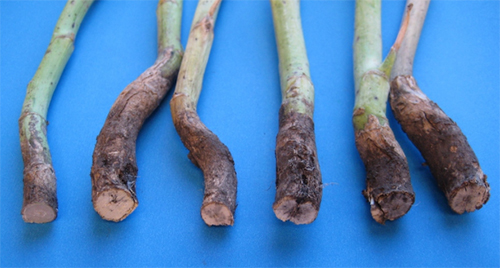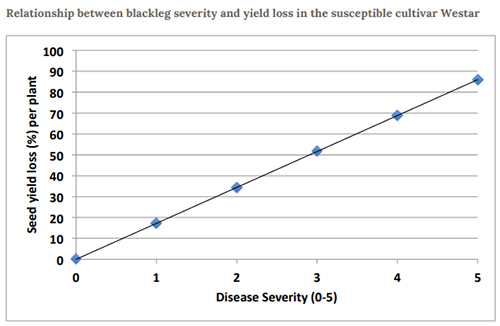
From left to right: 0 to 5
Yield decreased linearly with increasing disease severity. The study found that seed yield per plant
was reduced by 17.2% for each unit increase in disease severity. Although the relationship between
disease severity and seed yield is linear and negative, the total yield loss under field conditions is
dependent on the proportion (incidence) of plants in each disease category. The higher the
proportion of plants with greater disease severity, the greater the expected yield loss.

Source: Hwang et al. 2016.
Foliar fungicide application
In another trial, Headline (pyraclostrobin) foliar fungicide was sprayed at different frequencies and
at different growth stages on the moderately resistant variety 1950RR to measure the impact of
blackleg on canola yield. The fungicide trials were conducted at CDCN in 2014 and 2015, and Namao
in 2015. Headline was applied as a foliar spray at the seedling stage (2-leaf or less), seedling stage +
early (10%) flowering stage, or at the seedling stage + early flowering stage + late flowering (80%)
stage and compared to a no-fungicide control.
Headline reduced disease severity and increased yield compared with the control. Three
applications of Headline were the most effective for reducing disease severity, but would not be
economical since yield was not significantly different between the three application timings.
Repeated applications of Headline would also exert selection pressure for insensitivity in L.
maculans populations.
The foundation of blackleg control continues to be the utilization of moderately resistant to
resistant canola hybrids. If growers observe that blackleg disease ratings are increasing over time, a
switch to a variety with a different source of resistance to help manage the disease would be the
first choice.
Source : canadianagronomist